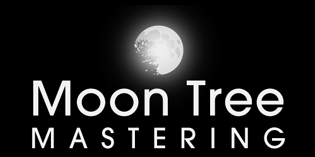Welcome to the world of audio mastering! As you embark on your journey to create polished and professional-sounding music, one of the most essential tools in your arsenal is the equalizer, or EQ. EQ is a powerful tool that allows you to shape the tonal balance of your tracks, enhancing their clarity, depth, and impact. In this article, we will explore ten mastering EQ tips that will help you take your mixes to the next level. So let’s dive in and unlock the full potential of equalization!
Understand the Frequency Spectrum
To master EQ effectively, it’s crucial to have a solid understanding of the frequency spectrum. Each instrument and sound occupies a specific range of frequencies. By identifying and addressing problematic frequencies, you can enhance the overall mix. For example, cutting the low end on a vocal track can reduce muddiness and make it stand out more clearly.
Start with Broad Strokes
Begin your EQ adjustments with broad strokes before diving into finer details. Focus on the major tonal imbalances first, such as boosting or cutting the lows, mids, or highs. This approach sets a solid foundation for subsequent refinements.
Listen in Context
Remember to always listen to your mix as a whole rather than isolating individual tracks. By doing so, you can ensure that the changes you make with EQ complement the overall balance of your music. Pay attention to how each element interacts with others and make adjustments accordingly.
Embrace the Notch Filter
The notch filter is a powerful tool for addressing specific problem frequencies. If you encounter resonant frequencies that stand out or clash with other elements, employ a notch filter to reduce their prominence. Notch filters are especially useful for taming harshness in vocals or removing unwanted resonances in instruments.
Use Gentle Cuts and Boosts
When making EQ adjustments, it’s generally best to use gentle cuts and boosts rather than drastic changes. Small increments can have a significant impact without introducing unwanted artifacts or altering the original character of the sound. Aim for subtlety and finesse in your EQ moves.
Utilize Shelving EQs
Shelving EQs are effective for broad adjustments to the frequency balance of a track. By using low-shelf and high-shelf filters, you can enhance or attenuate the lows or highs across the entire frequency spectrum. This technique is particularly useful for adding warmth or airiness to your mix.
Employ Dynamic EQ
Dynamic EQ combines the functionality of equalization and compression. It allows you to address frequency imbalances that occur over time, such as controlling harshness during vocal peaks or reducing boomy bass. Dynamic EQs can be a valuable tool in achieving a more controlled and balanced mix.
Consider Mid/Side Processing
Mid/side processing enables you to treat the center and sides of your stereo mix independently. This technique provides enhanced control over the stereo image and allows you to adjust the width and balance of specific elements. Experiment with mid/side EQ to create a wider, more spacious mix.
Aim for Balance, Not Perfection
While it’s tempting to obsess over achieving a perfectly flat frequency response, remember that music is a subjective art form. Instead of pursuing an ideal balance, focus on achieving a pleasing and balanced sound. Trust your ears and make EQ adjustments based on what sounds good to you and your intended audience.
Use Reference Tracks
Reference tracks are an invaluable resource in the mastering process. Choose songs that have a similar sonic character or style to your mix and compare their tonal balance to your own. This practice can help you identify areas where your mix can be improved through EQ adjustments.
Conclusion
Mastering EQ is both an art and a science. By applying these ten tips, you’ll be well-equipped to enhance the tonal balance, clarity, and impact of your mixes. Remember, practice and experimentation are key to mastering the art of equalization. So, keep refining your skills, trust your ears, and enjoy the process of sculpting your music with the power of EQ.
FAQs
Can I use EQ during the mixing stage?
Absolutely! EQ is a versatile tool that can be used at various stages of the music production process, including mixing. However, when mastering, it’s important to approach EQ with a broader perspective, focusing on the overall tonal balance of the entire mix.
Should I always cut frequencies when using EQ?
Not necessarily. EQ should be used to enhance the sound, and sometimes boosting certain frequencies can achieve the desired effect. However, it’s crucial to exercise moderation and avoid excessive boosting, as it can introduce unwanted artifacts or imbalance.
What’s the difference between graphic EQ and parametric EQ?
Graphic EQs allow you to adjust multiple frequency bands simultaneously, typically using sliders. Parametric EQs offer more precision by providing control over individual frequency bands, including the ability to adjust the center frequency, bandwidth, and gain.
Is mastering EQ the final step in the music production process?
Mastering EQ is an essential part of the mastering process, but it’s not the final step. Other tasks, such as dynamic range processing, stereo imaging, and final level adjustments, are also crucial in achieving a polished and cohesive master.
Are there any rules for EQing different instruments?
While there are no strict rules for EQing different instruments, it’s important to consider their natural frequency ranges and roles within the mix. Experimentation, careful listening, and a deep understanding of each instrument’s characteristics will guide you in making informed EQ decisions.
